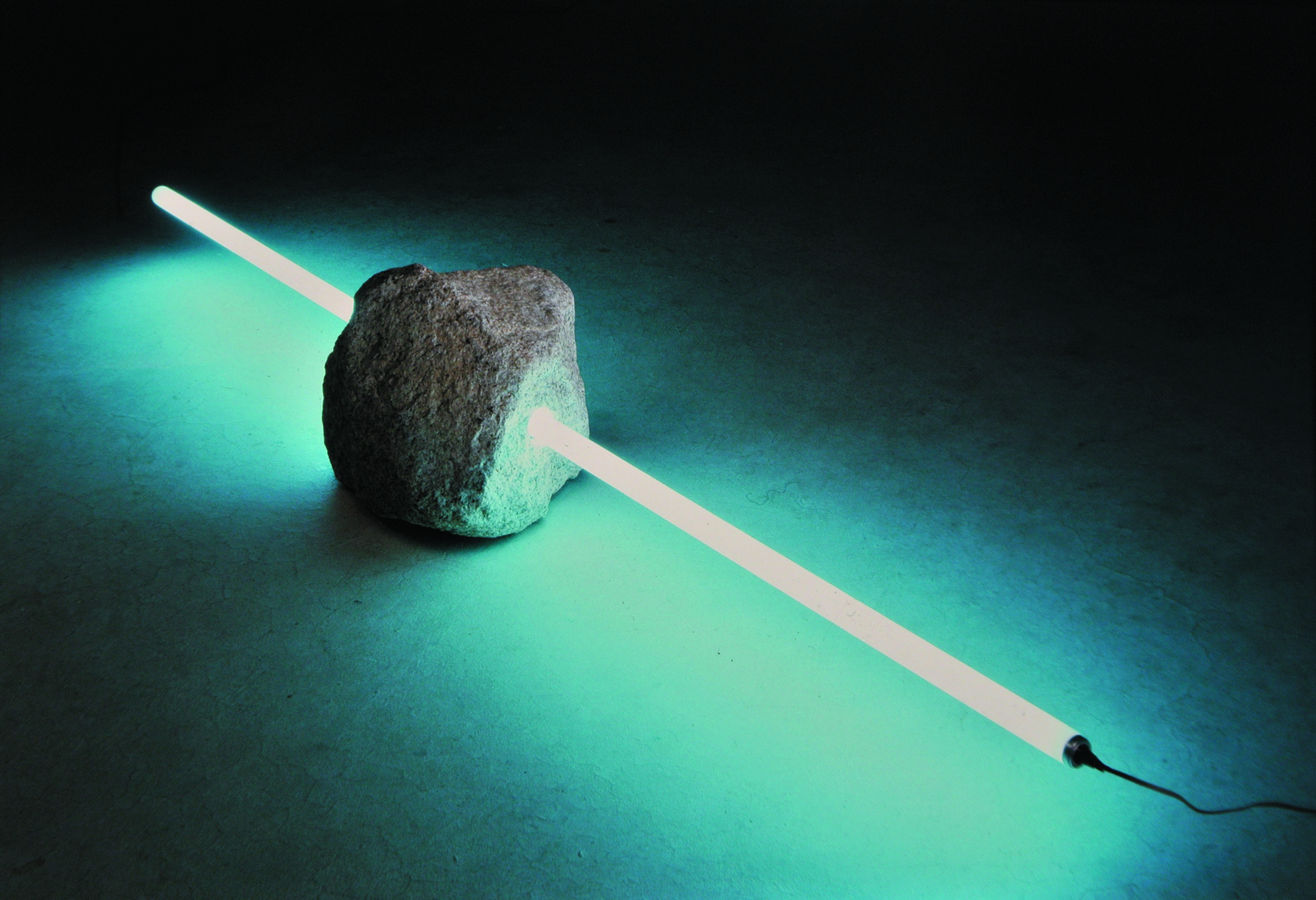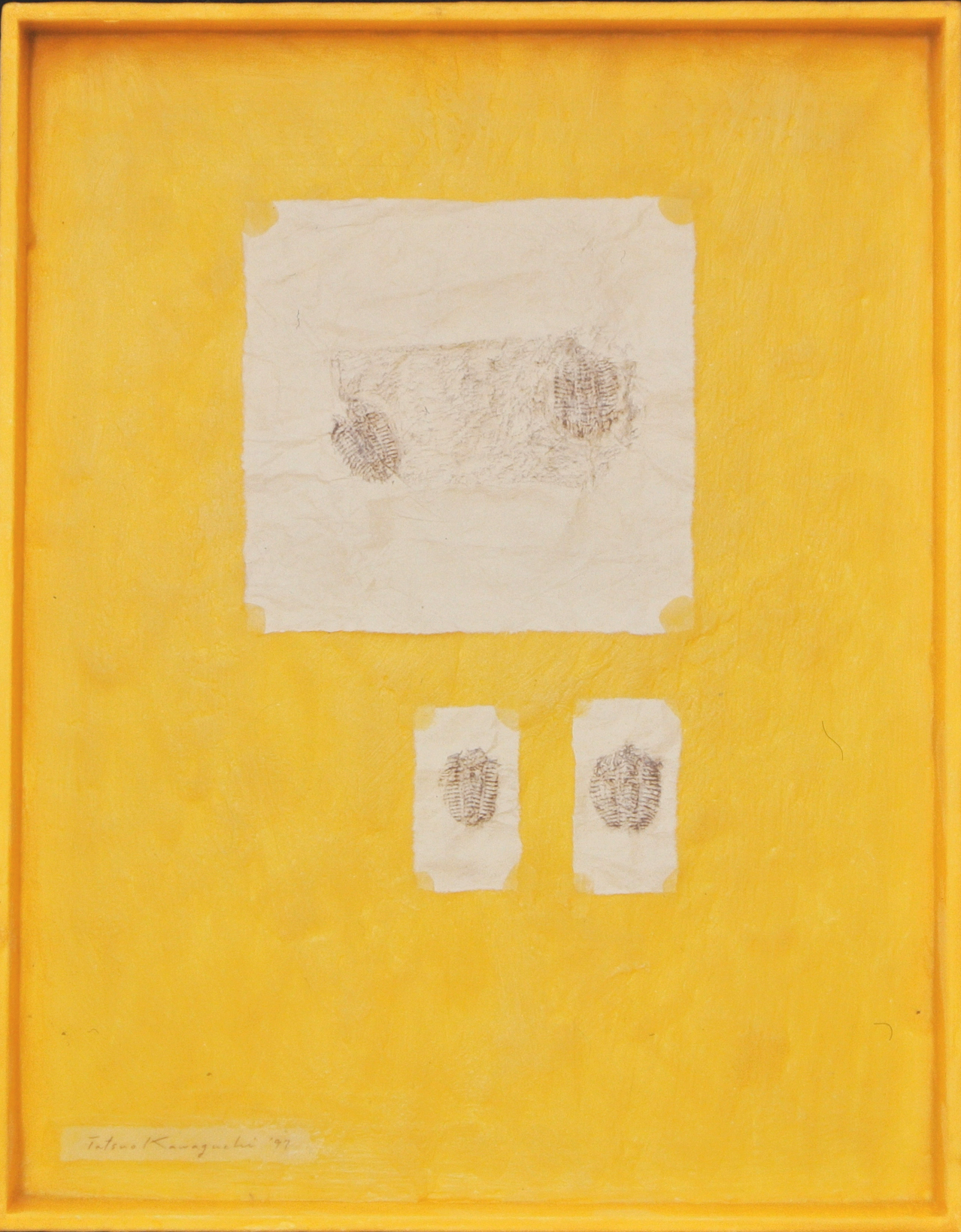Tatsuo KAWGUCHI (1940-) has remained at the forefront of the Japanese contemporary art world. Embracing avant-garde expressions early in his career, Kawaguchi has received much acclaim both in Japan and abroad since the ’70s,
and has participated in historically significant exhibitions such as; in 1970 The 10 th International Art Exhibition of Japan , in 1973 the 8 th Biennale de Paris (France) ,
in 1986 Japon des Avant Gardes (Centre Georges Pompidou, France) , and in 1989 Magiciens de la Terre ( Centre Georges Pompidou, France ) . In recent years, he has also held solo exhibitions; in 2007 at Hyogo Prefectural Museum of Art, in 2009 at the National Museum of Modern Art Tokyo and in 2012 Iwaki City Art Museum and come to be widely recognized as an important postwar Japanese artists.
It is possible to detect links to both the Gutai and Mono-ha movements in Kawaguchi’s work. But unlike these artists, Kawaguchi incorporates language as
a form of expression and sets out to create work with parallels to conceptual art. Throughout his career, Kawaguchi has used the connection between the “visible” and “invisible” as a conceptual foundation. This is rooted in his attempts to visualize the “relations”, like passsage of time or circle of life are visualized in plants or seeds.




